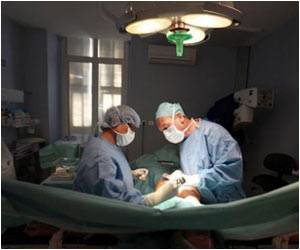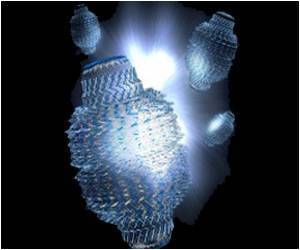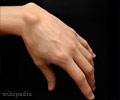The gold standard for artificial joints can be improved with the addition of some actual gold, revealed a new study.

‘Dental implants and replacement joints with a three-to-one mixture of titanium and gold with a specific atomic structure makes it four times harder than the currently used pure titanium.’





Morosan, a physicist who specializes in the design and synthesis of compounds with exotic electronic and magnetic properties, said, "The new study is a first for me in a number of ways. This compound is not difficult to make, and it's not a new material." In fact, the atomic structure of the material - its atoms are tightly packed in a 'cubic' crystalline structure that's often associated with hardness - was previously known. It's not even clear that Morosan and former graduate student Eteri Svanidze, the study's lead co-author, were the first to make a pure sample of the ultrahard 'beta' form of the compound. But due to a couple of lucky breaks, they and their co-authors are the first to document the material's remarkable properties.
"This began from my core research," said Morosan, professor of physics and astronomy, of chemistry and of materials science and nanoengineering at Rice. "We published a study not long ago on titanium-gold, a one-to-one ratio compound that was a magnetic material made from nonmagnetic elements. One of the things that we do when we make a new compound is try to grind it into powder for X-ray purposes. This helps with identifying the composition, the purity, the crystal structure and other structural properties."
"When we tried to grind up titanium-gold, we couldn't," she recalled. "I even bought a diamond (coated) mortar and pestle, and we still couldn't grind it up."
Morosan and Svanidze decided to do follow-up tests to determine exactly how hard the compound was, and while they were at it, they also decided to measure the hardness of the other compositions of titanium and gold that they had used as comparisons in the original study.
Advertisement
What the team didn't know at the time was that making titanium-3-gold at relatively high temperature produces an almost pure crystalline form of the beta version of the alloy - the crystal structure that's four times harder than titanium. At lower temperatures, the atoms tend to arrange in another cubic structure - the alpha form of titanium-3-gold. The alpha structure is about as hard as regular titanium. It appears that labs that had previously measured the hardness of titanium-3-gold had measured samples that largely consisted of the alpha arrangement of atoms.
Advertisement
Morosan said she has no plans to become a materials scientist or dramatically alter her lab's focus, but she said her group is planning to conduct follow-up tests to further investigate the crystal structure of beta titanium-3-gold and to see if chemical dopants might improve its hardness even further.
Source-Eurekalert










